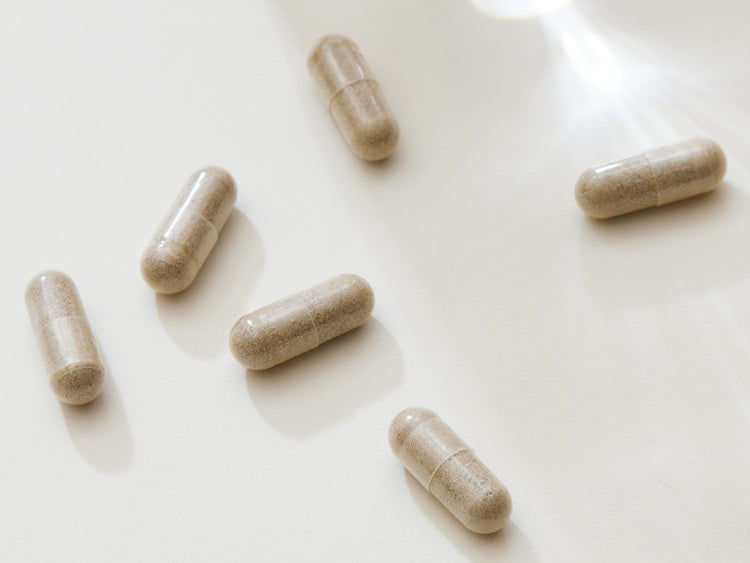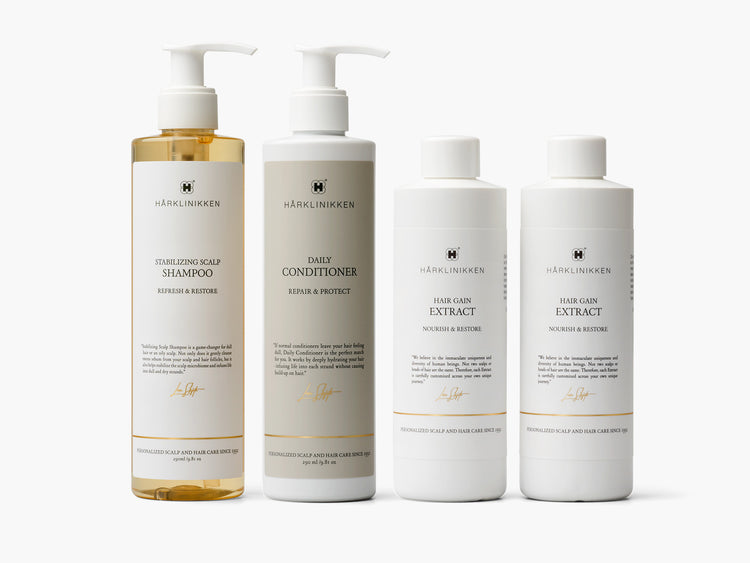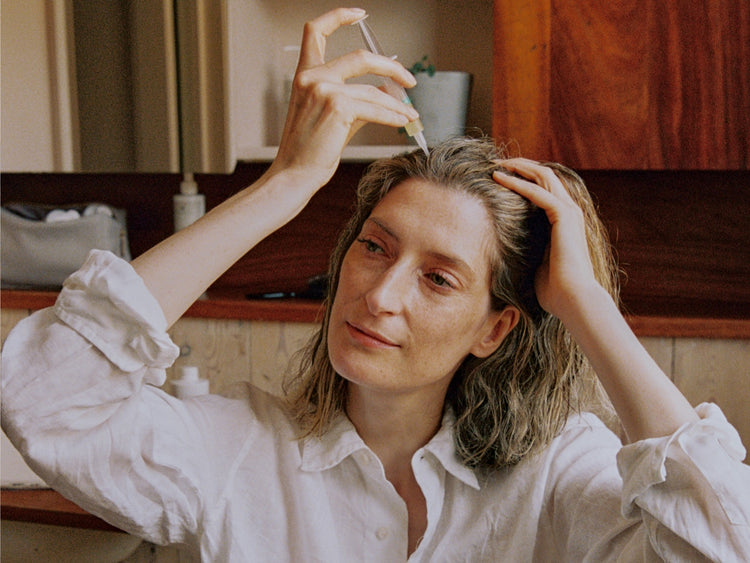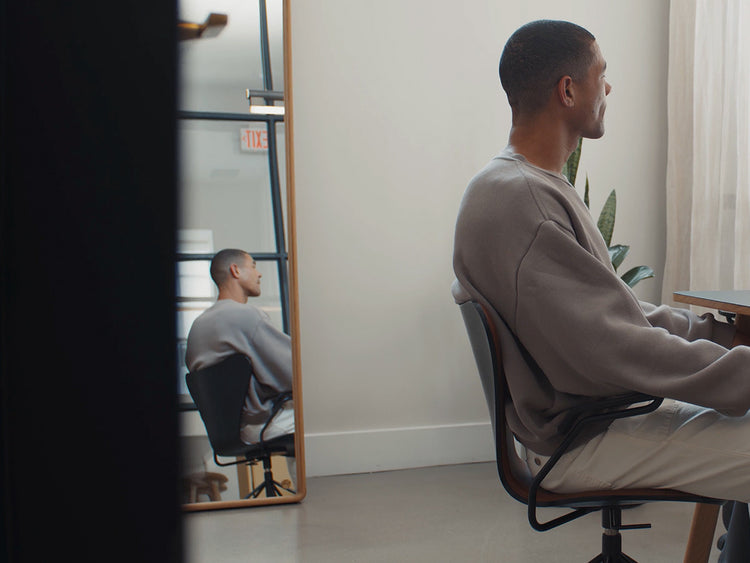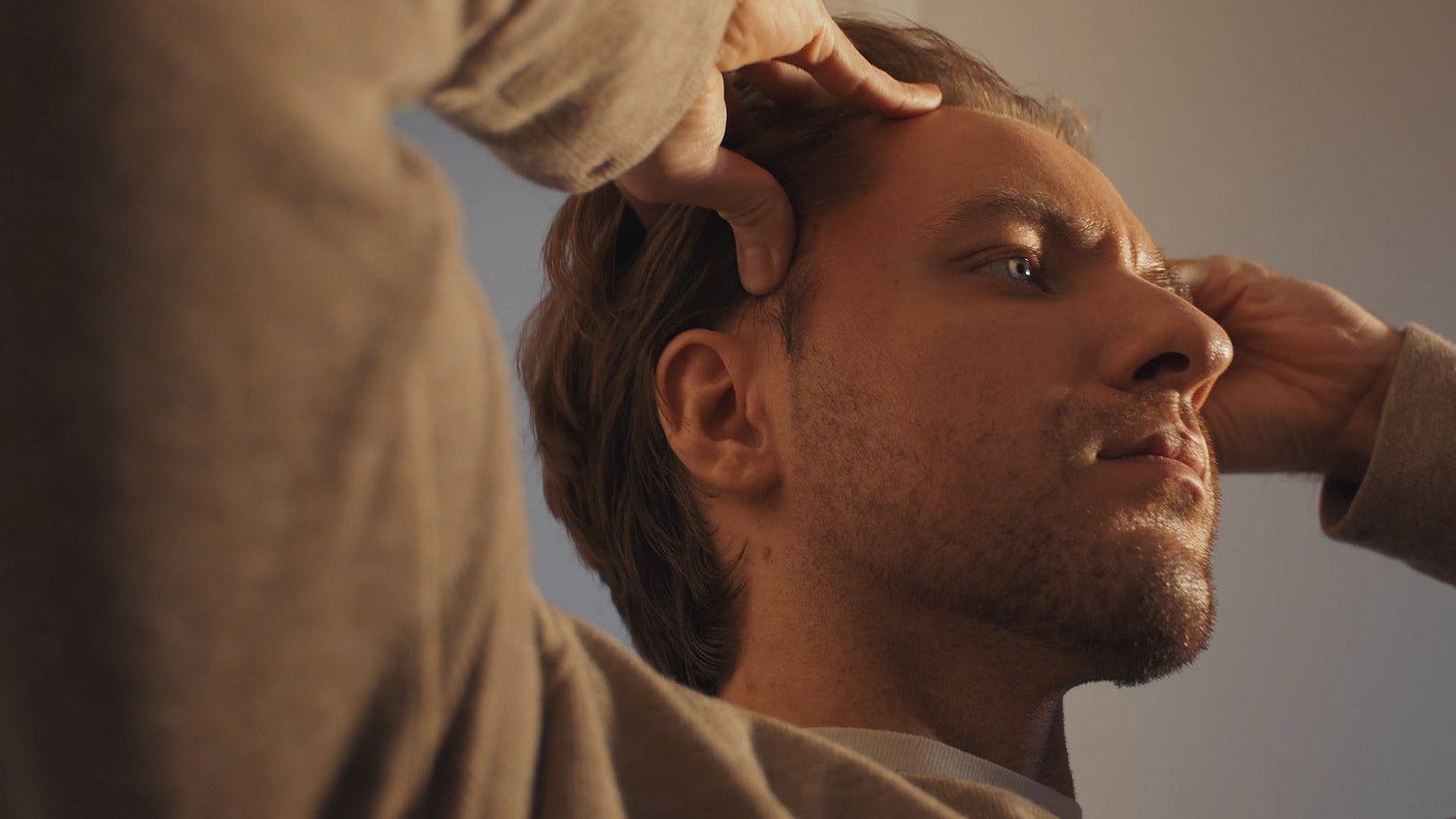From getting regular trims to avoiding heat styling and correctly hydrating your hair, you’ve probably received various tips for how to achieve and maintain strong, supple strands. But in pursuit of hair that’s healthier, fuller and more lustrous, you should also pay close attention to your scalp care. Hårklinikken’s New York Clinic Director and Head of Global Training, Sarah Mardis explains, “Healthy hair always starts with the scalp. If you are neglecting your scalp – by not washing it enough, using the wrong technique, getting frequent sunburns or simply using the wrong products – you can end up with an imbalanced scalp microbiome, which can exacerbate hair loss, thinning and shedding.” Here’s everything you need to know about scalp health, including the common causes of an unhealthy scalp, plus expert tips on how to improve and avoid it.
What causes an unhealthy scalp?
Various factors contribute to the overall condition of your scalp so it’s difficult to pinpoint one specific cause for an unhealthy scalp. However, the following are known to play a large role, and mitigating them could help bring you one step closer to a healthier scalp microbiome.
Lifestyle factors that cause an unhealthy scalp
Poor diet:
Nutrient deficiencies can impact the condition of your scalp the same way they affect the skin on your face. In order for your scalp skin cells to function at their best, it’s important to consume enough calories each day through a healthy, balanced diet comprised of carbs, proteins, fats, fibre, vitamins, and minerals. Focus on whole, unprocessed foods that are as fresh as possible as they have a high nutrient density. Of course, drink an adequate amount of mineral water to stay hydrated.
Stress:
Elevated stress and anxiety cause our adrenal glands to produce more cortisol. Increased levels of this hormone can lead to inflammation in the body – including the scalp – resulting in dryness, itchiness, flaking and redness. High cortisol levels can also cause the scalp to produce excess sebum which could lead to an oily scalp and clogged follicles and scalp irritation.
Haircare habits that cause an unhealthy scalp
Infrequent or incorrect cleansing:
Your cleansing habits can heavily affect your scalp health. Infrequent washing can lead to major imbalance in the scalp environment and can result in irritation because excess oils, product residue, flakes and dirt build up on the scalp and clog the follicles. On the other hand, cleansing with harsh formulas can strip your scalp and hair of essential moisture, causing dryness and inflammation.
Harmful styling:
How you style your hair doesn’t just affect your strands, it also affects your scalp. Tight hairstyles such as braids, ponytails and extensions can pull at the hair and cause tension at the roots, leading to a sore scalp and inflamed hair follicles. If worn often, tight styles can lead to traction alopecia – a form of hair loss localised to an area of the scalp where hair strands have been pulled from the root repeatedly. Additionally, hot styling tools such as blow dryers and straighteners don’t just impact the health and quality of your hair strands, the excessive heat can also irritate your scalp and oil glands – disrupting the scalp’s natural balance.
Biological factors that cause an unhealthy scalp
Skin conditions:
Common skin conditions such as eczema, psoriasis and seborrheic dermatitis can also affect the condition of your scalp. If you suffer from an inflammatory skin condition, you may also experience some symptoms on your scalp.
Ageing:
As our bodies age, they produce less collagen and elastin, gradually resulting in thinner skin, less elasticity, increased texture and dryness. Ageing also causes the oil glands in your scalp to produce less sebum, which makes it more prone to dryness, and dehydration – impacting its ability to hold on to essential moisture and heal from damage.
Environmental factors that cause an unhealthy scalp
Sun exposure:
Your scalp is as vulnerable to sun damage as the rest of your skin is. Prolonged exposure to harmful UV rays can severely damage the scalp-skin barrier by causing dryness which leads to less sebum production; sun burns that can become inflamed and irritated; and scarring which could potentially lead to hair loss and thinning.
Environmental stressors:
Largely unprotected from the elements, your scalp is exposed to environmental stressors such as air pollutants, pollen, dust and more. These factors can imbalance the scalp’s microbiome and lead to common signs of irritation such as itching and increased dandruff.
Common symptoms of an unhealthy scalp
• Excessive oil production
• Excessive dryness
• Itchiness, irritation, soreness or redness
• Increased flakes and dandruff
• Broken skin, cuts or sores
• Hair loss, thinning or excessive shedding
Common signs of a healthy scalp
• An adequate amount of sebum – the scalp’s natural oil
• Clean and clear of product buildup, dirt, debris and flakes
• Free from itching, irritation, redness inflammations
How to reset your scalp health
The scalp is a delicate microenvironment that requires the right products, care and commitment to function properly – think of it like a skincare routine. Here are two essential tips to help you reset your scalp.
1. Choose the right shampoo
Your cleansing habits can heavily affect your scalp health. Infrequent washing can result in irritation and follicle-clogging buildup from excess oils, product residue, flakes and dirt, while harsh shampoos can strip your scalp and hair of moisture, causing dryness and inflammation. Effective but mild enough for daily use, Hårklinikken shampoos work to create and maintain the optimal scalp microenvironment for stronger, fuller and healthier hair growth. Our formulas help to reset and nourish the scalp and hair follicles, stabilise sebum production and balance the scalp microbiome and pH level.
2. Use a scalp treatment
Custom-blended to suit each client’s biology, lifestyle and environment, our award-winning Hair Gain Extract is a scalp treatment that is formulated to target hair loss and thinning concerns topically. It optimises conditions for hair growth by restoring the scalp environment, strengthening hair at the root and re-engaging the follicles to stimulate healthy hair growth.
Tips to help you prevent an unhealthy scalp
At Hårklinikken, we create and customise expert-formulations to reset the scalp microenvironment, strengthen hair at the roots and re-engage the follicles for stronger, healthier hair growth. Here are some expert tips from our New York Clinic Director and Head of Global Training, Sarah Mardis, that’ll help you prevent an unhealthy scalp.
1. Avoid products formulated with fragrance
“So many of the products that we're used to using today contain fragrance, which can be a major irritant for skin and something I wouldn't recommend in any hair care products.” Depending on how sensitive your scalp is, products containing fragrances can have allergen effects and cause redness, itching or inflammation.
2. Cleanse correctly
“What we sometimes see is that although people are shampooing regularly, they’re not cleansing the scalp adequately. This could be because they’re not using the right formula, not enough product, not taking the time to massage the shampoo into the scalp, or they have dense hair that makes it difficult to reach the scalp.” The right cleansing technique is essential to deeply cleansing your scalp of product, debris, oil, flakes and dirt. After applying shampoo directly to your scalp, use your fingertips to gently massage the formula in and rinse thoroughly after 30 seconds. If you have dense curly, coily or kinky hair, part your hair into sections and apply shampoo to each one individually.
3. Don’t sleep with wet hair
“We naturally produce quite a lot of heat from our heads, so when you sleep with wet hair or leave the hair damp for long periods of time this creates a warm, moist environment that can imbalance the scalp’s microbiome as well as encourage bacterial and fungal components to thrive.” This can promote fungal growth and lead to dandruff, rashes or irritation.
4. Avoid tight styles on wet hair
Seemingly minor habits can have a major impact on your scalp health. If your post-wash routine includes putting your wet hair in tight styles such as buns and ponytails, Mardis advises against them. “Try to ensure that your hair is completely dry before you put it up. Tight styles trap the heat from your head and create a warm, damp scalp. This becomes a breeding ground for microorganisms, which can lead to scalp issues such as fungal infections.”
5. Give your scalp breathing room
When protecting your scalp from environmental stressors like pollution and sun exposure, opt for loose-fitting styles. “If you often wear hats or scarves, try to give your scalp and hair as much breathing room as possible. Tight headgear can pull at the roots of the hair, which is not ideal for the sensitive scalp microenvironment.”
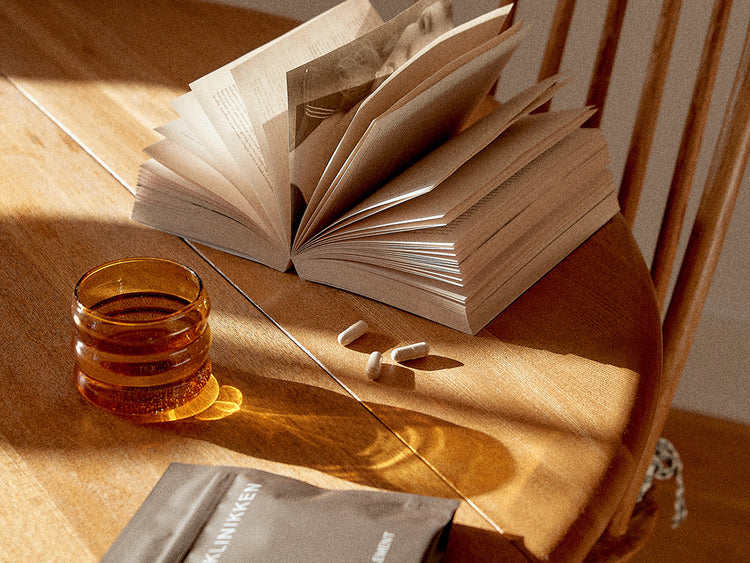
Ready to Improve Your Scalp & Hair Health?
Our Hair Supplement is designed to promote stronger, fuller, healthier hair growth and is part of the entire Hårklinikken scalp and hair care system.
Unsure where to start? Book an in-person consultation or take the virtual Hair Assessment.
